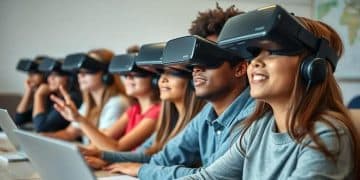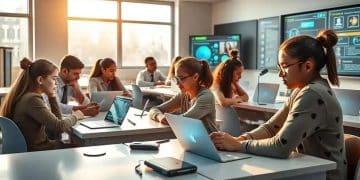Insights on virtual lab simulations: transforming education
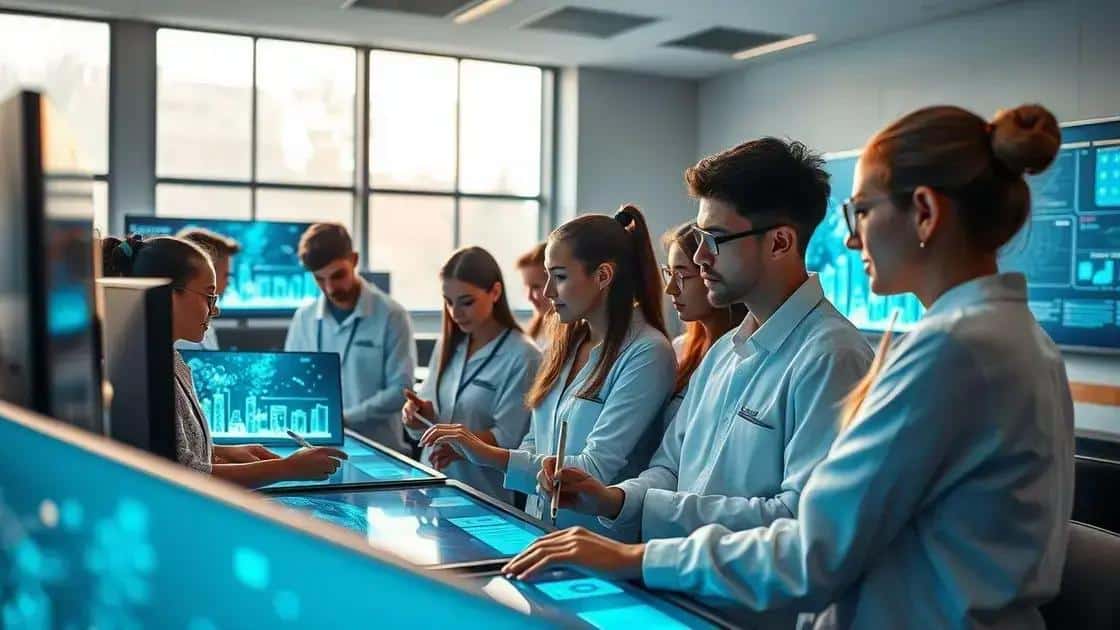
Virtual lab simulations provide interactive, safe, and engaging learning environments that enhance student engagement and offer practical experiences, preparing students for real-world applications in various fields.
Insights on virtual lab simulations reveal a dynamic shift in how education is approached today. Imagine students experimenting in a safe, controlled environment that sparks curiosity and enhances learning. Let’s dive into this captivating topic!
understanding virtual lab simulations
Understanding virtual lab simulations is crucial in today’s educational landscape. These simulations offer an interactive platform where students can explore complex scientific concepts without the risks often associated with real-life experiments.
One of the key elements of virtual lab simulations is their ability to provide a safe learning environment. Students can conduct experiments that may be too dangerous or costly in traditional labs. This opportunity not only enhances their learning experience but also boosts their confidence in tackling scientific challenges.
Key Features of Virtual Lab Simulations
Several features make virtual lab simulations effective in enhancing learning:
- Interactivity: Students actively engage with the content, attracting their focus and improving retention.
- Accessibility: Learners can access labs from anywhere, allowing for flexible learning schedules.
- Variety of Experiments: A wide range of experiments can be conducted, catering to diverse learning styles.
When students use these simulations, they not only gain theoretical knowledge but also develop practical skills that are essential for their future careers. Moreover, teachers can track students’ progress in real time, tailoring their support to meet individual needs.
The Role of Technology in Enhancing Virtual Labs
Technology plays a pivotal role in the efficiency of virtual lab simulations. With advancements in software and hardware, simulations can provide realistic experiences that mimic actual laboratory settings.
As technology improves, the simulations become more immersive. Virtual labs can integrate augmented reality (AR) or virtual reality (VR), allowing students to feel as if they are physically present within the lab environment. This immersive experience is more engaging and can lead to better understanding of complex concepts.
Furthermore, virtual labs often include tutorials and instructional videos that guide students through processes step-by-step, enhancing their learning experience.
benefits for students and educators
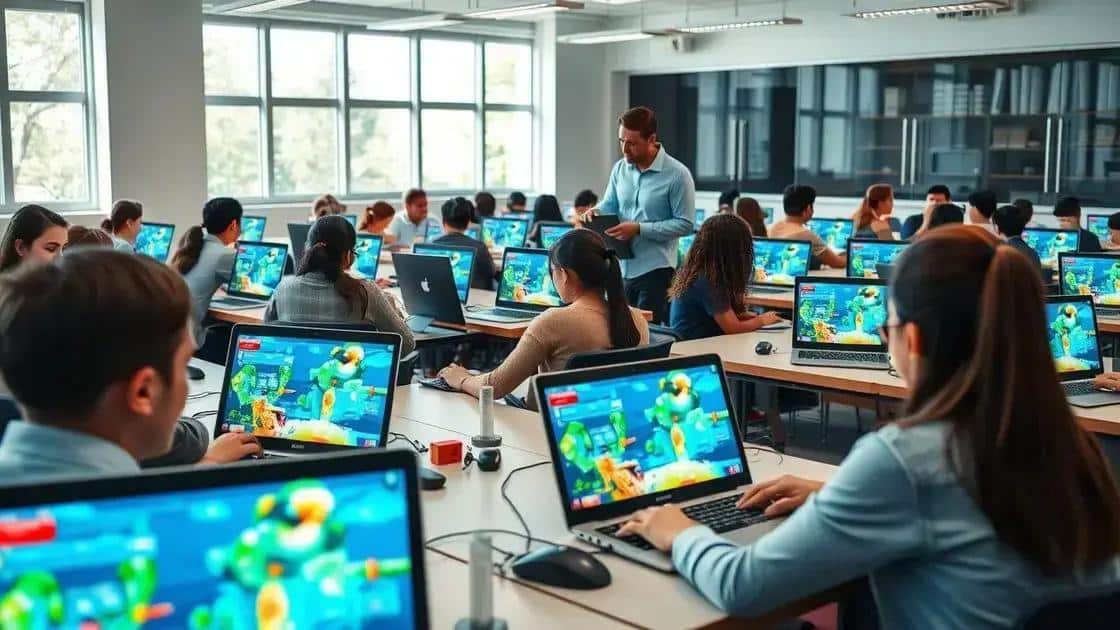
Virtual lab simulations provide numerous benefits for both students and educators. These platforms are transforming traditional learning approaches, making education more engaging and effective.
One major advantage for students is the opportunity to learn at their own pace. They can revisit experiments as needed, gaining a deeper understanding of concepts. This autonomy fosters confidence and encourages active learning.
Benefits for Students
- Enhanced engagement: Interactive simulations captivate students’ attention, often making learning feel like a game.
- Safe exploration: Students can conduct experiments without the risks associated with chemicals or equipment.
- Immediate feedback: Users receive instant results, helping them correct mistakes and learn from their experiences.
Educators also reap rewards from virtual lab simulations. These tools allow teachers to incorporate innovative teaching methods, making complex topics accessible. With detailed analytics, instructors can pinpoint areas where students struggle.
Benefits for Educators
- Customizable content: Educators can tailor simulations to fit their curriculum and teaching style.
- Streamlined assessments: Teachers can quickly assess student understanding through built-in evaluation tools.
- Increased efficiency: Virtual labs save time spent on setup and cleanup associated with physical labs.
As a result, the overall educational experience is enhanced, making lessons more productive and enjoyable. Both students and educators find value in using virtual lab simulations, leading to a richer learning environment.
tools and platforms for effective simulations
There are many tools and platforms designed for effective virtual lab simulations. These resources play a crucial role in modern education, providing students with the ability to experiment and learn in a simulated environment.
One of the prominent platforms is Labster, which offers a wide variety of simulations across different scientific disciplines. With Labster, students can engage in interactive experiments, gaining valuable insights into topics such as biology, chemistry, and physics.
Key Platforms for Virtual Lab Simulations
- Labster: Known for its extensive library of simulations, Labster makes complex scientific principles accessible through engaging scenarios.
- PhET Interactive Simulations: This platform offers free interactive math and science simulations, focusing on essential concepts while providing a hands-on experience.
- PraxiLabs: PraxiLabs specializes in providing realistic virtual lab experiences, where students can conduct experiments in various subjects, including biology and chemistry.
- ChemCollective: This resource focuses on chemistry education, offering virtual labs that allow students to explore and create experiments online.
These tools not only facilitate learning but also encourage collaboration among students. Many platforms allow multiple users to participate in simulations simultaneously, fostering teamwork and communication skills.
As technology advances, the effectiveness of these tools continues to improve. With features like real-time feedback and guided tutorials, students gain a more profound understanding of complex concepts. The combination of interactive elements and engaging content makes virtual labs an essential part of the learning experience.
real-world applications of virtual labs
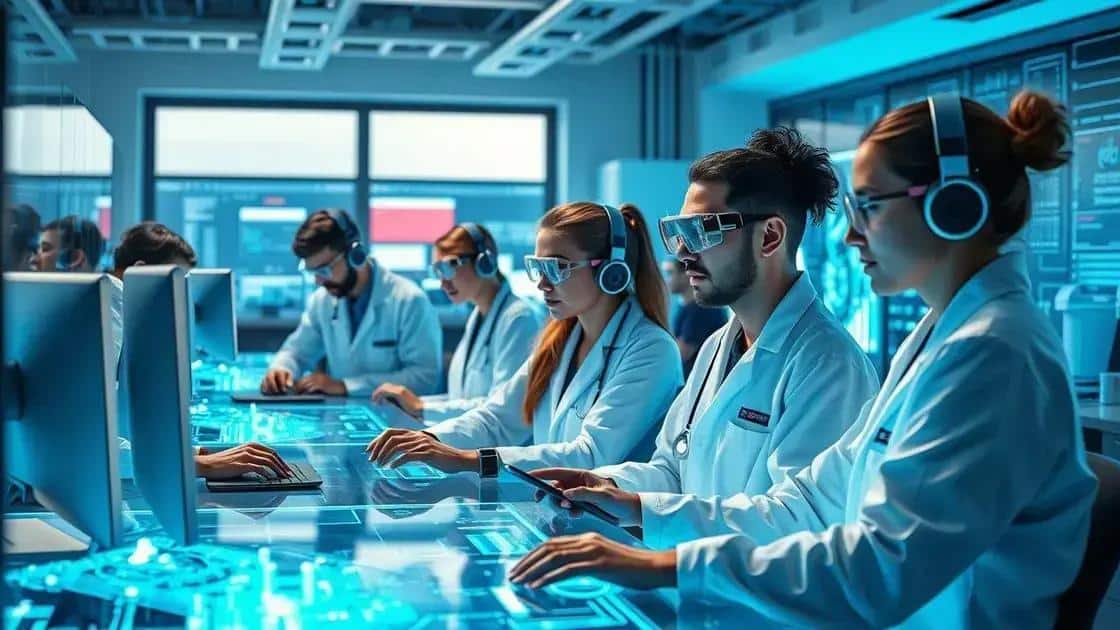
The real-world applications of virtual labs extend beyond the classroom, influencing various fields and industries. These simulations serve as powerful tools in research, training, and education, bridging the gap between theory and practice.
In scientific research, virtual labs allow scientists to conduct experiments that might be too dangerous or expensive in a physical lab. For example, researchers studying hazardous materials can simulate their properties without any risk. This technology not only saves time but also resources in developing new theories and ideas.
Applications in Education
- Distance Learning: Virtual labs make it possible for students in remote areas to access quality education without geographical limitations.
- Hands-On Experience: Students can gain practical skills through simulations, preparing them for real-world challenges in their future careers.
- Innovative Curriculum: Educators can incorporate experiments into subjects like physics or biology, enhancing engagement and understanding.
Additionally, industries such as healthcare and engineering are adopting virtual labs for training purposes. Medical students use simulations to practice procedures, gaining confidence before entering clinical environments. In engineering, students can design and test structures virtually, ensuring feasibility and safety before physical implementation.
The potential of virtual labs is vast. They facilitate collaboration and innovation, allowing teams from different geographical locations to work together on projects. These labs create opportunities for students to learn from experts, as many platforms feature guest lectures or collaborative projects with industry professionals.
FAQ – Frequently Asked Questions about Virtual Lab Simulations
What are virtual lab simulations?
Virtual lab simulations are interactive platforms that allow students to conduct experiments online, providing a safe and engaging learning environment.
How do virtual labs benefit students?
They enhance student engagement, offer a safe space for exploration, and provide practical experience that prepares students for real-world challenges.
Can educators track student progress in virtual labs?
Yes, many virtual lab platforms offer analytics tools that enable educators to monitor student performance and tailor instruction accordingly.
Are there specific tools for creating virtual labs?
Yes, platforms like Labster, PhET, and PraxiLabs provide various tools and resources for educators to create effective virtual lab experiences.
